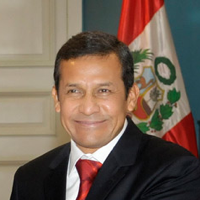LIMA, Peru -- During Peru's recent presidential election campaign, a chorus of politicians and pundits warned that a victory by leftist candidate Ollanta Humala would put the country on the same track as Venezuela under President Hugo Chavez. But since winning the second-round run-off on June 5 and being sworn in as Peru's new president July 28, Humala has surprised critics and supporters alike by the moderation of his rhetoric and quality of his cabinet.
Humala, a 49-year-old retired lieutenant colonel, is the first leftist to be elected president of Peru in two decades, but he did so by promising to follow the Brazilian, as opposed to the Venezuelan model of socialism. His victory reflects a shift in South America, where the left has been ascendant for the past decade, and in Peru, where the left has been marginalized since a ruthless communist insurgency wracked the country during the 1980s and 1990s.
Humala won by promising to maintain the country's pro-investment policies while expanding government programs for the poor, who constitute the bulk of his political base. His path to the presidency began with encouragement from his father, Isaac Humala, who founded a political movement called "ethnocacerimso" that espouses the nationalization of mines and industry and the superiority of Peru's indigenous peoples. The elder Humala urged his sons to join the army as a path to power. While still in uniform, Ollanta Humala led a small military uprising in the final days of the Fujimori government, which he was later pardoned for. He ran for president once before, in 2006, but was defeated by ex-President Alan Garcia after Hugo Chavez urged Peruvians to vote for Humala, an endorsement that turned the majority against him.

